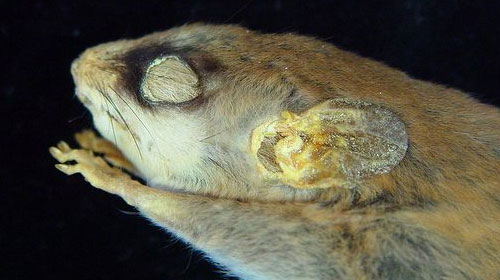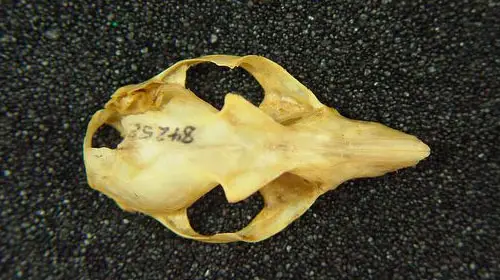Anderson’s mouse opossum
Anderson’s mouse opossum is a small marsupial that is thought o live exclusively in the forest areas of the Andes in Southern Peru. This species is very rare and until 1998 was only known by 1 specimen that was found over 50 years ago. In 1998 6 more specimens were uncovered in the Andes but it is still unknown just how many exist out in the wild today. Anderson’s mouse opossum is currently listed as critically endangered due to serious loss of habitat.

Anderson's mouse opossum original specimen
The new specimens found in 1998 were discovered in 2 separate locations within this Andes forests and from looking at the areas where they were found that the preferred habitat of Anderson’s mouse opossum is that of damp forest land usually close to streams or rivers. It is not believed that Anderson’s mouse opossum’s are under direct threat from humans as they are very small and are nocturnal however the threat of habitat loss from the rate of local deforestation could prove the species undoing.
Anderson’s mouse opossum’s spend most of their time in their nests especially during the day as they are nocturnal. The opossums nest is usually made up of twigs but opossums have been known to use vacant birds nests and even hollow trees for a nesting area. Anderson’s mouse opossum some what resembles a species of mouse with a brown/red color with a pale underside. Unlike other marsupial species the mouse opossum does not have a pouch.

Anderson's mouse opossum skull
The mouse oppossum spend most of their time alone but do breed frequently throughout the year which is an absolute must as the average life expeectancy of a mouse opossum in the wild may not even reach 1 year. When it comes to feeding the mouse opossum has a varied diet which consists mostly of fruit and insects although they have been known to eat other small rodents, bird eggs and small lizards on occasion.


